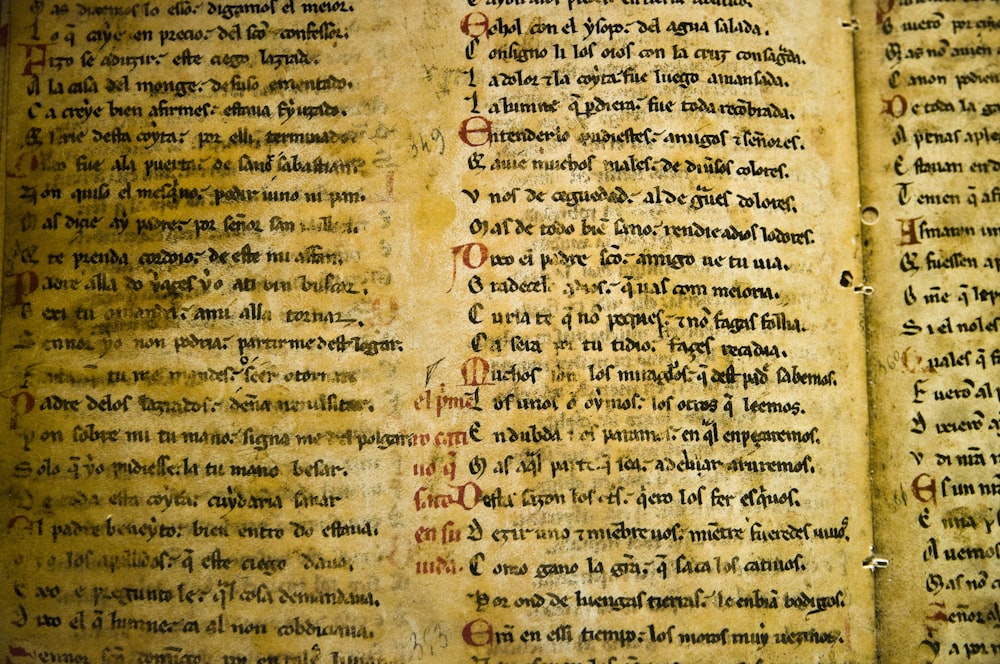Translate ancient transcripts online with our Guide
The digital age has brought unprecedented opportunities for scholars, enthusiasts, and curious minds alike to explore and translate ancient transcripts online. Unlocking the secrets contained within these ancient texts not only contributes to our understanding of history but also fosters a connection with the past. In this comprehensive guide, we will delve into the techniques, tools, and methodologies that can be employed to translate ancient transcripts in the vast landscape of the internet.
Understanding the Challenge: translate ancient transcripts
Image via Unsplash.com
Translating ancient transcripts poses unique challenges, primarily due to the linguistic evolution of languages over time. Syntax, vocabulary, and idiomatic expressions may differ significantly from modern counterparts. Additionally, the preservation state of ancient texts, often fragmented or degraded, adds complexity to the task. However, advancements in technology and collaborative efforts within the global community have paved the way for innovative solutions to tackle these challenges.
Choose the Right Texts: translate ancient transcripts
Begin your journey into the world of ancient transcript translation by choosing the right texts. Identify texts that align with your interests, expertise, or research goals. Some online repositories specialize in specific time periods, cultures, or languages, offering a wealth of material waiting to be explored. Websites such as the Perseus Digital Library, Project MUSE, or the Internet Ancient History Sourcebook provide a diverse array of ancient texts spanning various civilizations.
Develop Language Proficiency
Image via Unsplash.com
Before attempting to translate ancient texts, it’s crucial to have a solid understanding of the relevant languages. Enroll in language courses, utilize online language learning platforms, or seek guidance from linguistic experts. Proficiency in the ancient language will not only enhance your translation accuracy but also deepen your appreciation for the cultural nuances embedded in the text.
Access Reliable Online Resources: translate ancient transcripts
Tap into reputable online resources dedicated to ancient languages and translations. Websites like the Online Critical Pseudepigrapha, the Corpus Scriptorum Latinorum, or the Thesaurus Linguae Graecae offer a vast collection of texts along with tools and resources for scholars and enthusiasts. Many of these platforms provide critical editions, lexicons, and grammatical aids, facilitating a more accurate and informed translation process.
Utilize Machine Translation Tools
Embrace the power of technology by leveraging machine translation tools. Platforms like Google Translate, Microsoft Translator, and specialized tools like PROMT-Online can provide quick and automated translations of ancient texts. While these tools may not produce perfect translations, they can serve as a valuable starting point, offering insights into the meaning of individual words or phrases.
Collaborate with the Online Community: translate ancient transcripts
Image via Unsplash.com
Translation is often a collaborative effort, and the online community can be a valuable resource. Engage with forums, discussion groups, and social media platforms where linguists, historians, and enthusiasts share their insights and experiences. Platforms like Reddit (e.g., r/translator), academia.edu, or specialized forums for ancient languages foster a collaborative environment where you can seek guidance, share challenges, and benefit from the collective knowledge of the community.
Consult Existing Translations and Commentaries
Before embarking on your translation journey, consult existing translations and commentaries. Established scholars often publish annotated translations with valuable insights into the linguistic nuances, cultural context, and historical background of the text. These resources can serve as a roadmap, guiding you through the intricacies of the ancient language and providing a foundation for your own translation efforts.
Use Historical and Cultural Context as a Guide: translate ancient transcripts
Understanding the historical and cultural context of the ancient text is essential for accurate translation. Familiarize yourself with the societal norms, religious beliefs, and historical events relevant to the time period. This contextual knowledge will help you decipher idiomatic expressions, allegorical references, and cultural nuances embedded in the text, contributing to a more faithful translation.
Employ Textual Criticism and Source Analysis
Image via Unsplash.com
Apply textual criticism and source analysis techniques to evaluate the authenticity and reliability of the ancient text. Investigate the manuscript tradition, identify variations in different copies, and discern potential interpolations or corruptions. Textual criticism ensures that your translation is based on the most reliable and authentic version of the text, minimizing the risk of misinterpretation.
Consider Linguistic Evolution: translate ancient transcripts
Recognize the linguistic evolution of the ancient language over time. Languages undergo changes in syntax, vocabulary, and grammatical structure, and these changes can significantly impact the translation process. Consult historical linguistic studies and language evolution resources to trace the development of the language from antiquity to the present, enhancing your ability to bridge the temporal gap in translation.
Document Your Translation Process
Image via Unsplash.com
Maintain a detailed record of your translation process. Document the challenges you encounter, the decisions you make, and the resources you consult. This not only serves as a personal reference but also contributes to the broader academic community by providing insights into the translation methodology. Sharing your process can invite constructive feedback and foster collaboration with other scholars and enthusiasts.
Stay Updated on Research and Technology
The landscape of translation, both linguistic and technological, is continuously evolving. Stay abreast of the latest research in linguistic studies, historical linguistics, and translation theory. Additionally, keep an eye on advancements in technology that may enhance the accuracy and efficiency of the translation process. The integration of artificial intelligence and natural language processing into translation tools is an example of how technology is reshaping the field.
Seek Expert Guidance When Needed
If faced with particularly challenging passages or linguistic ambiguities, don’t hesitate to seek expert guidance. Connect with linguists, historians, or philologists who specialize in the relevant ancient language. Universities, research institutions, and online platforms often have experts willing to offer guidance and share their expertise. It ensures the fidelity of your translation.
Conclusion: translate ancient transcripts

Image via Pexels.com
Translating ancient transcripts online is a captivating and intellectually rewarding endeavor. It bridges the gap between modern minds and the wisdom of antiquity. By choosing the right texts, developing language proficiency, accessing reliable online resources, utilizing machine translation tools, collaborating with the online community, consulting existing translations, considering historical and cultural context you can embark on a transformative journey through time. As you unravel the linguistic puzzles of ancient texts, you not only contribute to the scholarly understanding of history. But also become a custodian of the cultural heritage embedded in these invaluable manuscripts. Embrace the challenge, enjoy the journey, and let the voices of the past resonate through your translations.









